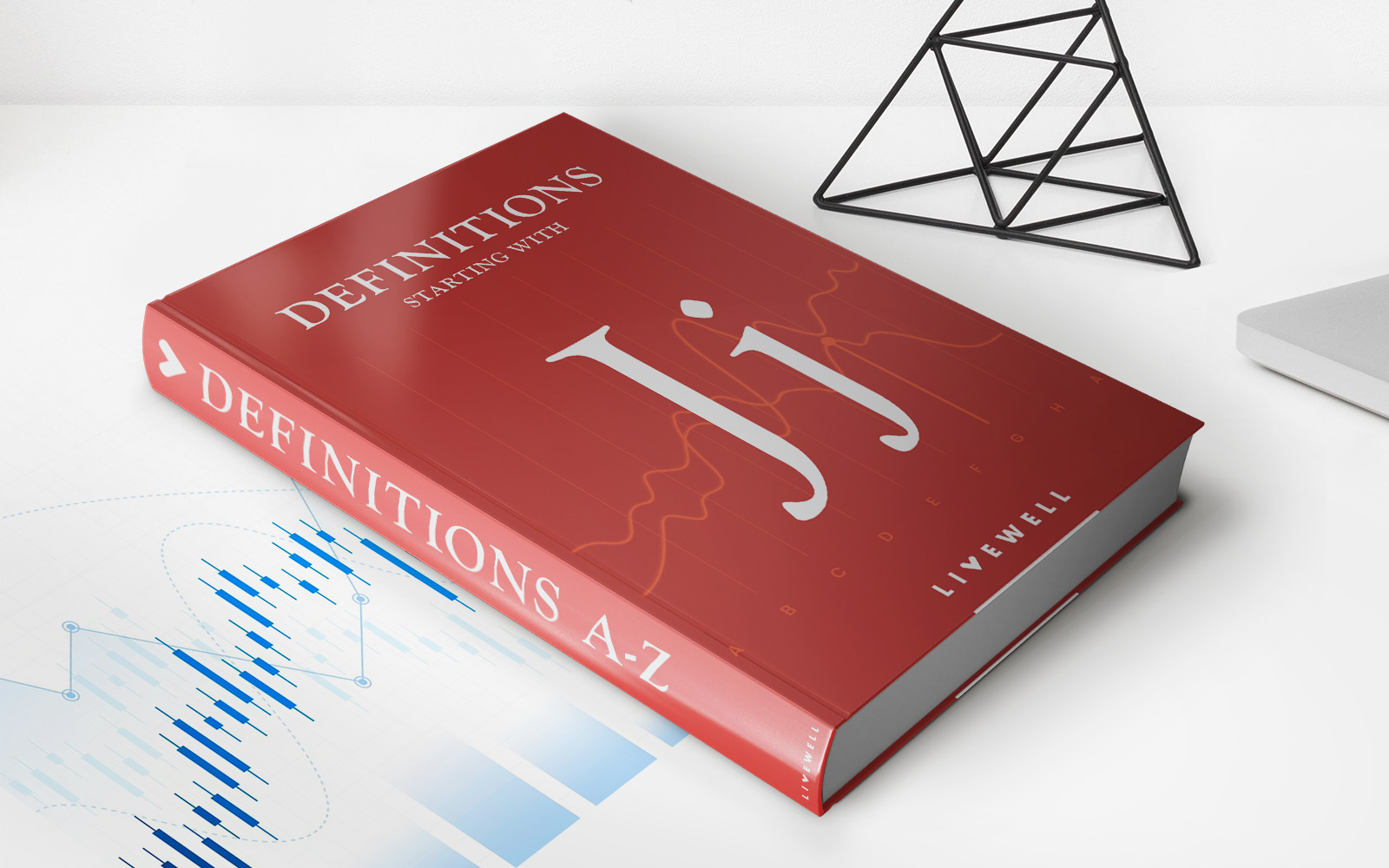Home>Finance>How Long Is The Grace Period On A Chase Mortgage Loan?


Finance
How Long Is The Grace Period On A Chase Mortgage Loan?
Modified: February 21, 2024
Learn about the grace period on Chase mortgage loans and how it affects your finances. Understand the implications to manage your mortgage effectively.
(Many of the links in this article redirect to a specific reviewed product. Your purchase of these products through affiliate links helps to generate commission for LiveWell, at no extra cost. Learn more)
Table of Contents
Introduction
Welcome to the world of mortgages, where the dream of homeownership becomes a tangible reality. As you embark on this journey, it's crucial to understand the nuances of mortgage terms and conditions to make informed decisions. One such aspect is the grace period, a timeframe that can significantly impact your mortgage experience. In this article, we will delve into the grace period on Chase mortgage loans, shedding light on its significance, duration, and implications for borrowers.
The grace period holds a pivotal role in the realm of mortgage payments, offering a window of opportunity to submit your monthly installment without incurring late fees or negative consequences. It serves as a buffer, acknowledging that unforeseen circumstances may arise, affecting your ability to make timely payments. This grace period is a lifeline for many homeowners, providing a brief reprieve during challenging times.
Understanding the grace period entails grasping the intricacies of mortgage management, financial responsibility, and the impact of late payments on your credit score and overall financial well-being. It's not merely a matter of timing; rather, it reflects the lender's policies, the borrower's obligations, and the delicate balance between flexibility and adherence to contractual agreements.
In the context of Chase mortgage loans, the grace period assumes a specific form, tailored to the institution's guidelines and the needs of its diverse clientele. By exploring the details of this grace period, we aim to equip you with the knowledge necessary to navigate your mortgage journey with confidence and clarity.
Join us as we unravel the mysteries of the grace period on Chase mortgage loans, offering insights, considerations, and a comprehensive understanding of this fundamental aspect of homeownership. Whether you're a prospective homeowner, a current borrower, or simply seeking to expand your financial acumen, this exploration will empower you to make informed decisions and embrace the intricacies of mortgage management.
Understanding the Grace Period
Before delving into the specifics of the grace period on Chase mortgage loans, it’s essential to comprehend the concept of a grace period within the broader context of mortgage management. The grace period represents a designated timeframe following the due date for your mortgage payment, during which you can submit your payment without incurring late fees or facing negative repercussions. This allowance acknowledges the potential challenges and unforeseen circumstances that may affect your ability to make timely payments, offering a brief reprieve to borrowers.
While the grace period provides a buffer for borrowers, it’s important to note that it does not alter the actual due date of the payment. Instead, it serves as a safeguard against immediate penalties, granting a short extension to ensure that unforeseen obstacles, such as delays in income or unexpected expenses, do not result in financial strain or punitive measures.
From a practical standpoint, the grace period offers a degree of flexibility, aligning with the recognition that financial stability can fluctuate, and unexpected challenges may arise. However, it’s crucial to approach the grace period with responsibility and a clear understanding of its implications. While it provides a temporary respite from late fees, it does not exempt borrowers from the obligation to make timely payments, nor does it alter the impact of late payments on credit scores or financial standing.
Furthermore, the length of the grace period may vary depending on the lender and specific mortgage terms. Understanding the duration of this grace period is paramount, as it directly influences the window of opportunity for submitting payments without repercussions. It’s a critical component of mortgage literacy, empowering borrowers to manage their finances effectively and navigate the intricacies of mortgage obligations.
By comprehending the essence of the grace period and its role in mortgage dynamics, borrowers can approach their financial responsibilities with clarity and foresight. This understanding fosters informed decision-making, prudent financial management, and a proactive approach to navigating the nuances of homeownership.
Grace Period for Chase Mortgage Loans
When it comes to Chase mortgage loans, the grace period embodies a crucial facet of the borrower experience, reflecting the institution’s approach to supporting its clients while upholding financial accountability. Chase extends a standard grace period of 15 days for mortgage payments, providing borrowers with a window of flexibility to submit their monthly installments without incurring late fees or adverse consequences. This 15-day grace period aligns with industry practices, offering a balance between accommodating unforeseen circumstances and maintaining financial discipline.
Understanding the specifics of the grace period for Chase mortgage loans empowers borrowers to navigate their financial obligations with confidence and clarity. This grace period serves as a safeguard against immediate penalties, acknowledging that financial stability can fluctuate, and unexpected challenges may arise. It offers a brief reprieve, allowing borrowers to address temporary setbacks without facing punitive measures.
It’s important to note that while the grace period provides a degree of flexibility, it does not alter the due date of the mortgage payment. Borrowers are still responsible for ensuring that their payments are submitted within the grace period to avoid late fees and potential impacts on their credit standing. As such, maintaining awareness of the payment due date and leveraging the grace period judiciously are integral to responsible mortgage management.
Chase’s provision of a 15-day grace period reflects its commitment to supporting borrowers through understanding and flexibility while emphasizing the importance of timely payments. By aligning with industry standards and acknowledging the potential challenges that borrowers may face, Chase strives to cultivate a borrower-centric approach to mortgage management, fostering a sense of partnership and financial empowerment.
Ultimately, the grace period for Chase mortgage loans encapsulates the institution’s dedication to balancing compassion with financial accountability, recognizing the dynamic nature of personal finances while upholding the principles of responsible borrowing. By embracing this grace period as a tool for navigating unforeseen circumstances, borrowers can approach their mortgage obligations with confidence, knowing that they have a brief but valuable window to address temporary challenges without incurring undue penalties.
Benefits and Considerations
Understanding the grace period on Chase mortgage loans entails recognizing the benefits it offers to borrowers, as well as the considerations that accompany this allowance. The grace period serves as a vital safety net, providing several advantages while prompting borrowers to approach it with prudence and responsibility.
Benefits:
- Flexibility: The 15-day grace period on Chase mortgage loans offers borrowers flexibility in managing their monthly payments, acknowledging the potential for unforeseen financial challenges and fluctuations in income.
- Buffer Against Late Fees: By providing a window of opportunity to submit payments without incurring late fees, the grace period offers a safeguard against immediate financial penalties, allowing borrowers to address temporary setbacks without facing punitive measures.
- Financial Breathing Room: The grace period offers a brief reprieve during challenging times, recognizing that unexpected expenses or income delays may temporarily impact a borrower’s ability to make timely payments.
Considerations:
- Due Diligence: While the grace period provides flexibility, borrowers must exercise due diligence in adhering to the payment due date and leveraging the grace period judiciously to avoid late fees and potential impacts on their credit standing.
- Long-Term Financial Impact: While the grace period offers temporary relief, consistently relying on it may indicate underlying financial strain, prompting borrowers to assess their long-term financial stability and seek proactive solutions when facing challenges.
- Communication with Lender: In cases where utilizing the grace period becomes a recurring necessity, maintaining open communication with the lender can facilitate discussions about potential hardship programs or alternative arrangements to ensure sustainable mortgage management.
By embracing the benefits of the grace period while considering the associated responsibilities, borrowers can navigate their mortgage obligations with prudence and foresight, leveraging this allowance as a tool for managing unforeseen circumstances while maintaining a proactive approach to financial stability.
Conclusion
The grace period on Chase mortgage loans embodies a delicate balance between flexibility and financial responsibility, offering borrowers a valuable window of opportunity to manage their monthly payments with prudence and foresight. By providing a 15-day grace period, Chase acknowledges the dynamic nature of personal finances and the potential challenges that borrowers may encounter, aligning with industry standards while fostering a borrower-centric approach to mortgage management.
Understanding the nuances of the grace period empowers borrowers to navigate their mortgage obligations with confidence and clarity, recognizing the benefits it offers in providing flexibility, a buffer against late fees, and a brief reprieve during challenging times. However, it’s essential for borrowers to approach the grace period with diligence, leveraging it judiciously while maintaining open communication with the lender to ensure sustainable mortgage management.
As borrowers embrace the grace period as a tool for navigating temporary setbacks, they can cultivate a proactive approach to financial stability, addressing unforeseen circumstances while upholding their commitment to timely payments. This balance between understanding the advantages of the grace period and acknowledging the associated considerations enables borrowers to engage in responsible mortgage management, fostering a sense of empowerment and financial well-being.
In conclusion, the grace period on Chase mortgage loans stands as a testament to the institution’s dedication to supporting its clients through understanding and flexibility, encapsulating the essence of responsible borrowing and financial partnership. By navigating the grace period with prudence and foresight, borrowers can embark on their homeownership journey with confidence, knowing that they have a valuable resource to address temporary challenges while maintaining their financial equilibrium.
As you navigate the realm of homeownership and mortgage management, may the grace period serve as a beacon of reassurance, empowering you to embrace financial responsibility while navigating the ebb and flow of personal finances with confidence and resilience.














